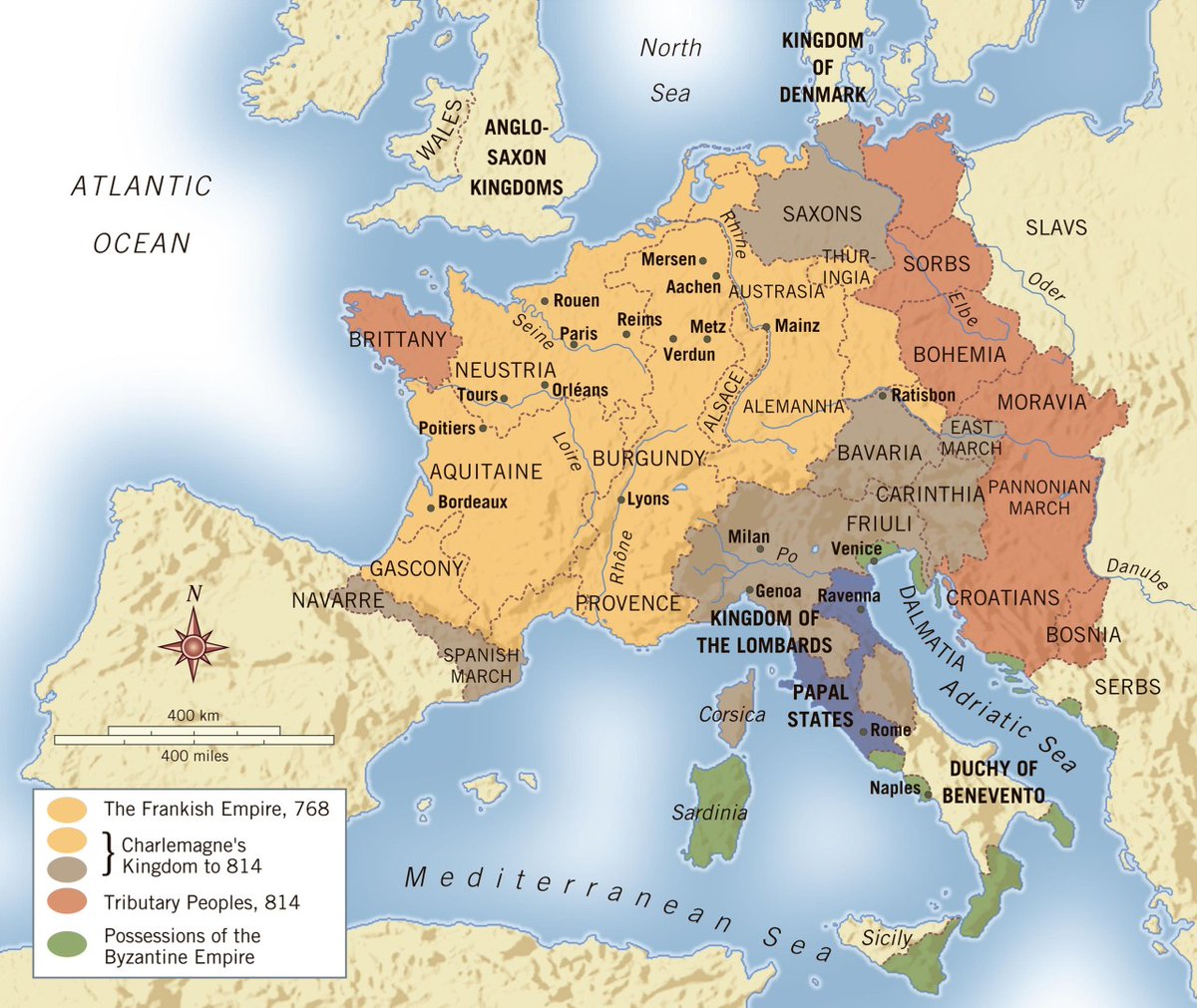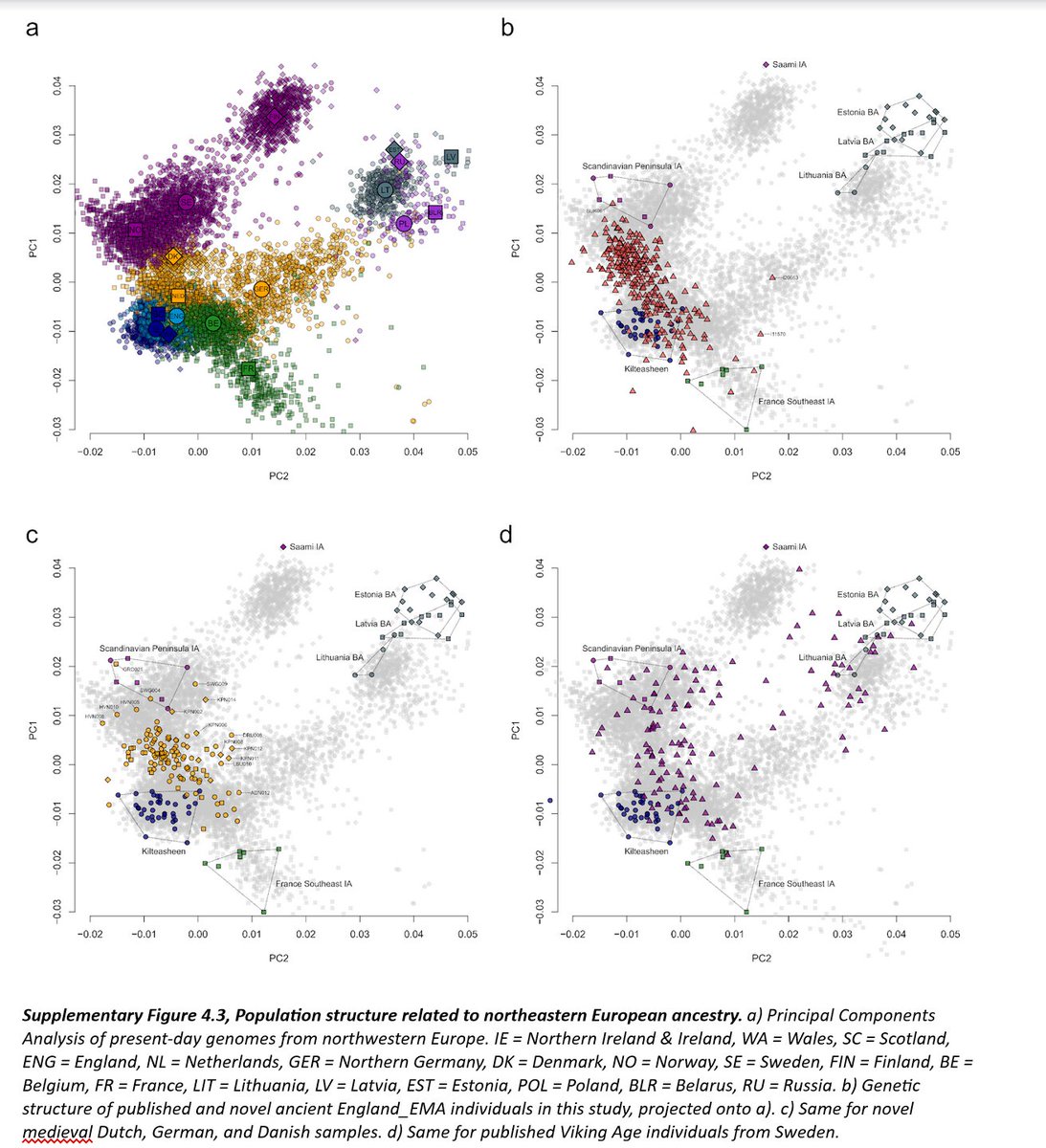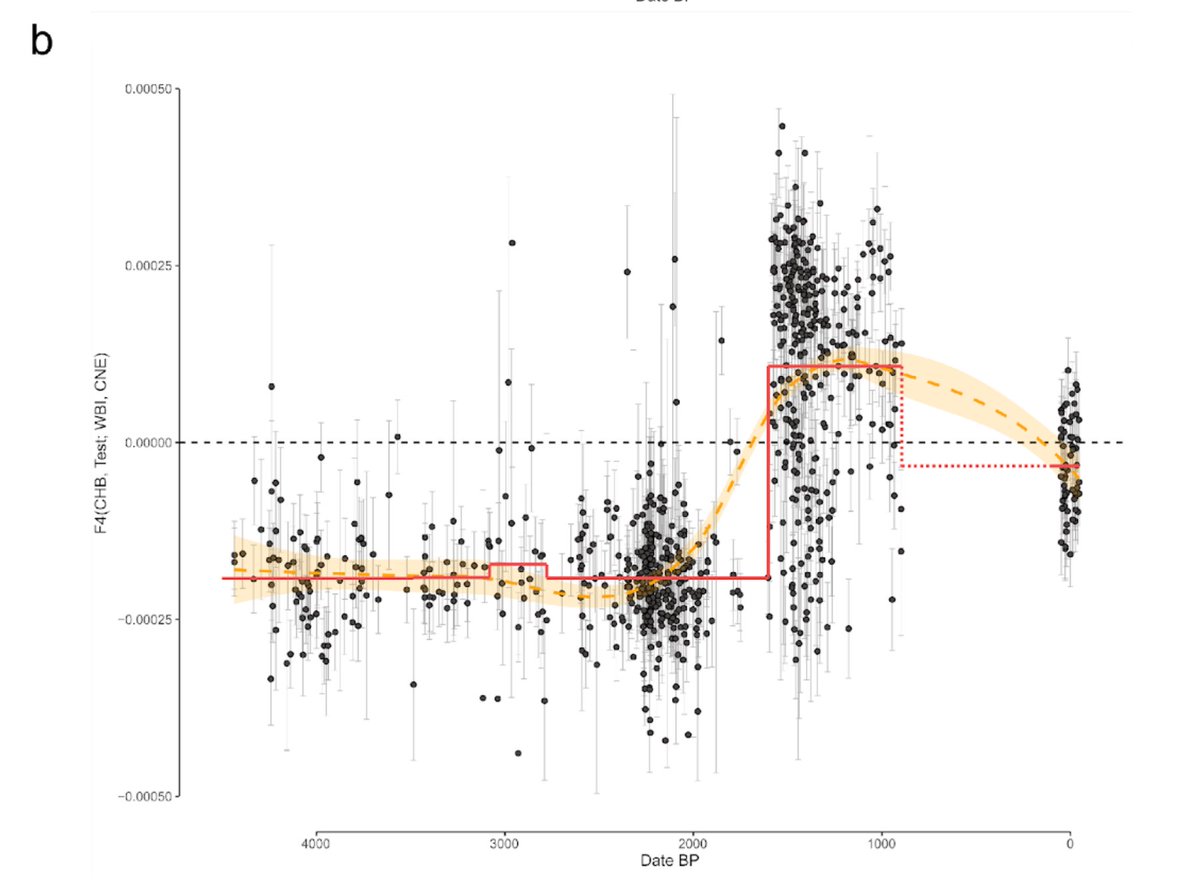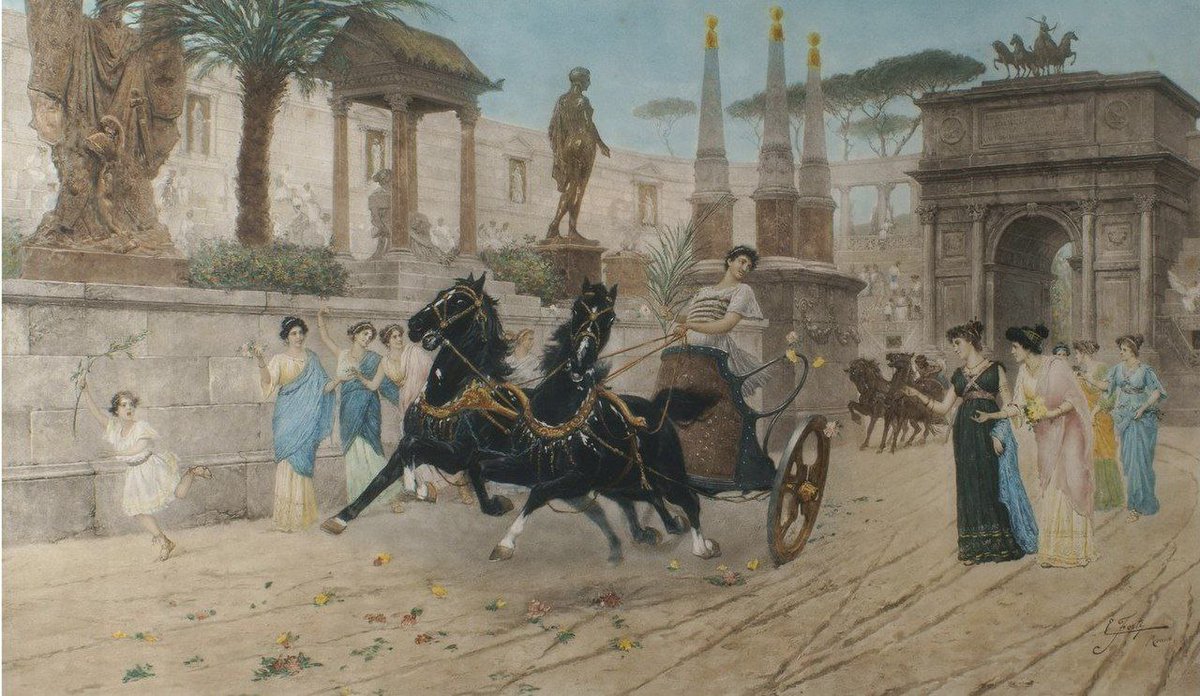The fine details of the recent Anglo-Saxon paper.
Let's explore the new genetic makeup of modern England and English descendants globally.
<THREAD>
Let's explore the new genetic makeup of modern England and English descendants globally.
<THREAD>

This paper was in the works for a long time. Many Anglophiles promised it would prove a violent Anglo-Saxon replacement of the Iron Age British, but it does not prove this. It does, however, prove many other aspects of the AS migration.
Here is the paper
nature.com/articles/s4158…
Here is the paper
nature.com/articles/s4158…
The authors took genetic samples from a number of early Medieval graveyards, all postdating 450 AD in England, from across Britain, Ireland, Germany, Belgium, France, and Denmark, and along with previously published samples from all over Europe. 

The Anglo-Saxons were a Germanic group that migrated to Britain after the retreat of Rome. If anyone claimed that there was no migration, that theory is now squashed. Anglo-Saxons cluster with Danes and North Germans. 

They came with women and children, not as roving male warbands, and intermarried with natives. The authors say, “In Dover Buckland, one of the most comprehensively sampled cemeteries in our dataset, we observed the mixing of genetic and cultural identities at the family level.” 

Although the theory of warbands of elite men is not true, the Anglo-Saxon families nevertheless established themselves, their culture, religion, and language as elite in British society (hence as a vector for language change across the whole island).
People from continental Low Germany migrated continuously, though perhaps not at the same rate, from the 400s to the 800s AD, at which point Scandinavian migrants (Vikings) began to contribute to British DNA.
Haplogroups from Britain before migrations show stereotypically Celtic groups, but once the Germanic invasion is alleged to have begun, we find an influx of haplogroups that are only found in greater Germania. This gives proof to the fact that an invasion did actually occur. 





Before the 400s AD, we see almost no Germanic ancestry, but after this point, we find a spectrum of Germanic ancestry in individuals, with many being high or entirely Continental North European (Anglo-Saxon). 

The study determines the exact region this Germanic DNA comes from. However, they also state that the area from the Netherlands to Denmark form a homogeneous block in which it is hard to distinguish variation. 

“we also note the strong genetic homogeneity among most analysed sites in the northern Netherlands, northern Germany and Denmark, implying that, during the Early Middle Ages, the continental North Sea and adjacent western Baltic Sea area was a genetic continuum spanning...
most of the western North European plain without major geographical substructure”
That area is a wide coastal plain, with mountains only appearing in the center of Germany where genetics begin to vary.
That area is a wide coastal plain, with mountains only appearing in the center of Germany where genetics begin to vary.

There still was a large amount of social dominance at play, it was not simply a blind mass movement. In the Worth Matravers grave site in Dorset along the southern coast, almost all graves were purely WBI (Brythonic) as late as 800 AD.
This is in spite of the fact that the Anglo-Saxons had spread to that area and founded Wessex as early as 519 AD. As the authors state, once the AS period began, we see Germans and Britons with similar burials and grave goods, suggesting easy cultural assimilation.
Many of the analyzed graves were mixed between Anglo-Saxons and Britons, as well as their genetically mixed offspring. Pictured here is the medieval graveyard at Oakington, Cambridgeshire. 

A problem: the models which try to describe Medieval English people as a mixture of solely Anglo-Saxons from the continent (Central North European, CNE ancestry), and native Celtic British (Western British Isles, WBI ancestry), fail more often than they succeed.
The researchers searched over hundreds of samples to find which one(s) could be a better fit to describe England, and found it to be a CWE (Continental West European) component, which is closely approximated by a France_IA (Iron Age) sample.
This third component of English ancestry yields a model which accurately represents the genetic makeup of the English people. 



Some Anglo-Saxons cluster with southern European (French/Roman), some were NE European (Baltic). This “Southern European” sample, which was their CWE sample, probably comes from the Alps or La Tène Czechia, or from southern France 



“In Southeast England specifically, individuals at several sites show ancestry whose closest match is in modern-day western Germany, Belgium and/or France, which matches the Frankish connections seen in the archaeological record for these regions.”
As much as we talk about an Anglo-Saxon migration, we must also talk of a Belgian or French migration into England. The average proportion of France_IA / CWE in Lincoln was 60%, and some individuals were entirely made up of France_IA. 





Locally this is more significant than the migration of Anglo-Saxons. If this second invasion was as significant as it appears genetically, then these French migrants must either have been of similar culture as the Anglo-Saxons, the Britons, or somewhere in between the two.
It is not clear how related the Continental and East British cultures were just before the migration. The authors say,
“Grave goods, including brooches and weapons, are in fact found on both sides of this family tree, pre-mixing and post-mixing...
“Grave goods, including brooches and weapons, are in fact found on both sides of this family tree, pre-mixing and post-mixing...
(for example, in the youngest and mixed generation, we found both weapons, beads and pin, and their mother with a brooch).”
Again, the authors analyze no British burials before 450 AD. They only use early Medieval samples, not late Classical ones.
Again, the authors analyze no British burials before 450 AD. They only use early Medieval samples, not late Classical ones.
This is partially due to the widespread practice of cremation overtaking the practice of burials during the Roman period, but it nevertheless leaves us in the dark as to what exactly the Anglo-Saxons came upon.
CWE and CNE ancestry are highly regionally correlated. Areas with significant CNE will also have CWE ancestry. I suspect this is due to the topography of Britain as well as her urban development in that region under Roman rule. 

Celtic River Names exist through all of Britain, graves identified as Anglo-Saxon appear in all of England, but mainly south of York and east of Nottingham, leaving the traditional Celtic kingdoms alone, and Frankish goods appear in major cosmopolitan areas both north and south. 

Anglo-Saxon graves roughly correspond to the appearance of Frankish goods, indicating that most AS burials took place in cosmopolitan areas, and that Anglo-Saxons began their migration by occupying major population hubs. Most of the north is devoid of Frankish DNA contributions.
This study actually affirms the results of previous studies which estimate that the largest portion of Anglo-Saxon ancestry present in England peaks at about 45%, with the rest being made up of Insular Celtic and French Iron Age DNA.
Many thought it would prove pure Germanicness
Many thought it would prove pure Germanicness
As for France, their analysis shows genetic continuity and homogeneity in France and Western Germany from the Iron Age into the Early Middle Ages (specifically, the Merovingian samples from Alt-Inden could be sampled entirely by France_IA or without major CNE contribution). 

What the figure above is showing is whether or not the sample in the row can be modeled entirely or in major part by the sample in the column. Brighter colors indicate that that sample can be modeled solely as that column sample.
This little statement that West Germany and Iron Age France show homogeneity and continuity is a powerful one. Western Germany was always more connected to mainline Europe than East Germany, which, as we will see, is more Slavic, and more tightly held in the dark primeval forests 





A similar pattern is detected in Copenhagen and Zealand, but from the Baltics and Poland, suggesting that Danes from that area have a not-insignificant portion of DNA derived from Iron Age Baltics and Medieval Poles. 

Despite all of this it's important to remember that all of Britain, Ireland, France, and Continental Germany cluster basically on top of each other. Here is a PCA with Northeast Europe, South Europe, N Africa and some Middle East. 

Additionally, the researchers give us four PCAs showing 1) modern European nations, 2) Anglo-Saxons on top of modern nations, 3) novel German, Danish, and Dutch samples, and 4) Swedish Viking individuals.
Many Baltic Vikings.
Many Baltic Vikings.

As well as an unsupervised admixture chart of Northern Europe, breaking down ancestry into CNE, WBI, Norwegian, Iberian/Spanish, Italian, Polish, and Finnish. North Germany is highly CNE, but once you pass into Belgium this quickly becomes highly WBI and IBS. 

In the above graphic, the researchers also modeled potential British and Irish backflow into continental Europe. Look closely, you’ll see one individual from northernmost Norway with almost entirely WBI ancestry, and another in central Norway. What’s going on here?
One individual in Norway has an entirely CNE admixture, and one with mostly CNE but also 25% IBS (Iberian) admixture. Apparently many Boii/Czechs had Iberian ancestry. Don't think too much about this graphic, it was not the main area of this study.
As far as Scandinavian ancestry in Britain goes, it’s not looking like a whole lot. Even in Viking Scotland Norway_IA peaks at 15%. The Danelaw, however, appears to have made a larger impact over the entire island. 





Let’s see the usual breakdown of the population into WHG, EEF, and Steppe components.
EEF ancestry in England begins low at the Bell Beaker stage, and rises with time, only decreasing during the period in which Steppe and WHG-rich CNE ancestry entered the English gene pool.
EEF ancestry in England begins low at the Bell Beaker stage, and rises with time, only decreasing during the period in which Steppe and WHG-rich CNE ancestry entered the English gene pool.

Nonetheless Englishmen today have higher EEF and lower WHG DNA than ever before in history, with EEF components at their highest since the Neolithic. Scotland never gained extra EEF ancestry. Ireland is highest in Steppe, Scandinavia and the Baltics are high-Steppe and high-WHG, 





so there must be some other population which continuously migrated to England which raised EEF levels. This other population is French, since the LBA was a low point of French relatedness, and today is the highest point of French relatedness.
If you keep up on genetics, you should remember that there was a paper on a French migration into Britain around 400 BC which was published a few years ago. This is NOT the cause of French DNA in modern England.
nature.com/articles/s4158…
nature.com/articles/s4158…
The researchers tested whether the CWE ancestry or CNE ancestry came first, and discovered each time that CWE ancestry POSTDATES the CNE ancestry. This means that the newly found French ancestry in England comes from after the Anglo-Saxons. 

This points not to a singular migration event, but to a continuous inflow of people from continental Europe. I suspect this was caused by a continuing cosmopolitan nature of England in the Middle Ages; that England did not regress to pure agrarianism.
This French migration was continuous since the Bronze Age and into the modern day, and France acts as a good vector for which EEF ancestry could enter into English society.
We can also see below a decrease in WBI and an increase in CNE during the AS migration.

We can also see below a decrease in WBI and an increase in CNE during the AS migration.


With this tripartite ancestry, they give us a new map of Britain and Ireland, showing regional ancestry differences across geography, broken down into the Iron Age population from that area, Continental Germans, and Continental French. 

And in fact, you can see in this graph of genetic distance that Kent is the most Germanic, Yorkshire is the most Iron Age Britain as far as England goes, Cornwall and Cumbria have the highest WBI (which is a combination of Welsh, British, Irish), 



Suffolk is the most Belgian, Cumbria the least Belgian, etc.
Also interesting that on this map of genetic closeness to Denmark, Lowland Scotland is lightly touched. Evidence to the idea that that area was more culturally Anglo-Saxon in the medieval era than genetically AS.
Also interesting that on this map of genetic closeness to Denmark, Lowland Scotland is lightly touched. Evidence to the idea that that area was more culturally Anglo-Saxon in the medieval era than genetically AS.

A few more good graphics:
1) vertical axis = Germanness, horizontal = Celticness, England sits in the middle.
2) a breakdown of CNE, WBI, and CWE ancestry for each grave site in England that was analyzed.

1) vertical axis = Germanness, horizontal = Celticness, England sits in the middle.
2) a breakdown of CNE, WBI, and CWE ancestry for each grave site in England that was analyzed.


If you want more or are interested in this topic, read the paper and especially read the supplementary material, where they go into detail on how their data was analyzed and how they got their results.
There were some people who questioned whether Anglo-Saxons existed at all, and many who thought that they migrated in small numbers. We see now that England is up to approx. 50% Anglo-Saxon in many areas. This is not an insignificant migration!
But what this study does not comment on is the extent of violence and extermination during the migration. In fact, the evidence of easy interbreeding indicates that there was no violent extermination of Celts, as some have argued.
I've been saying for a while that there is not real evidence towards the Anglo-Saxons being any more violent than the Britons already were among themselves. We can think of the migration, then, as a massive influx of migrants who established their society as superior. 

This does not necessitate a genocide of Britons or a migration of Britons to the west or into Brittany in France (Bretons did not flee from Anglo-Saxons in their migration).
We'll see how academia takes this new study, and continue to push for the truth in our Medieval history.
We'll see how academia takes this new study, and continue to push for the truth in our Medieval history.
• • •
Missing some Tweet in this thread? You can try to
force a refresh















